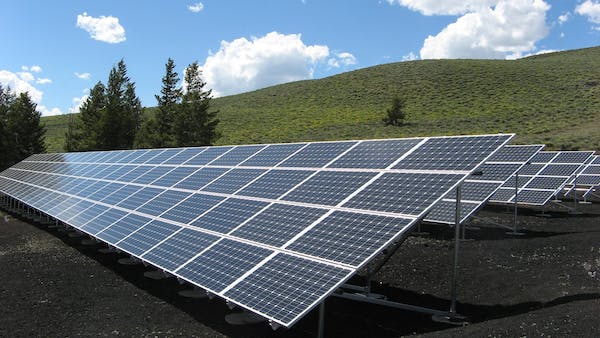
Solar energy is becoming more popular in India as it receives sunlight yearly. This energy is also clean, safe, and green. It can help reduce utility costs over time. The following statistics show that increasing numbers of people are recognizing the benefits.
India’s solar power capacity was 34.045 GW as of January 2020. Remember that in 2010, India had a total solar installed capacity of 10 MW. India’s energy future is increasingly powered by solar power. According to JMK Research & Analytics, a well-known research firm, India’s energy future will see solar power combined with battery technologies to improve solar + storage projects.
India’s solar energy is the cheapest in the world.
A Solar Power Plant located in Rajasthan, with a capacity of generating 200 Megawatts of electricity, sells its power to distributors for Rs2.44/kilowatt hour. This is a new record. Solar energy is now more affordable for solar power plants and individual homes who choose to generate power using solar panels mounted on their roofs. In the beginning, government subsidies and regulatory promotion were responsible for this. Solar panel prices are dropping, and new technologies have made this possible. Solar power in India is still cheaper than coal-generated power, even after subtracting construction and financing costs.
Solar energy is the best solution for areas not connected to the grid.
Many places in a country such as ours still need to be connected to the primary grid. Many villages still have a long way to go before achieving total electrification. In this context, solar + storage projects are a viable option. These systems are stand-alone and have proven effective in areas without grid connectivity. Solar + storage systems are more financially feasible as the price of power storage systems continues to drop.
Solar energy to combat first-world problems in cities
In many Indian cities, even the metropolises, power outages are expected. There’s also the pollution from diesel generators that makes the need for cleaner energies apparent. Many people have been prompted to install solar + battery storage systems on the rooftops of their homes and apartments. It is not only a way to reduce dependence on DISCOMs, but also a greener solution. These systems balance the demand for and supply of solar power. Solar panels produce their most power in the afternoon, but the need for electricity is most significant at night.
What is driving solar + battery systems?
Solar + Storage System is driven by many factors, including:
Affordability
Batteries are becoming cheaper and more efficient. Since 2010, the price of battery packs has fallen by about 87%. As new technologies are introduced, the price is expected to continue to drop. Battery design has also improved, reducing charging times, weight and size, etc.
Protect yourself from regulatory uncertainty.
Recently, the government changed its policy on net-metering guidelines and banking regulations. Net metering is still available to some domestic consumers, but policies will likely continue to evolve. Solar + storage protects consumers from such regulatory uncertainty.
Certainty of tariffs for the near future
The cost of electricity distributed via the primary grid will increase as the price of coal and other conventional sources of energy increases. Solar+storage rates should be fixed for the next twenty-five years. Solar power generated by consumers will be more affordable.
Solar power by itself is not comparable to fossil fuels. India can easily replace fossil fuel generators by combining solar power with storage.
